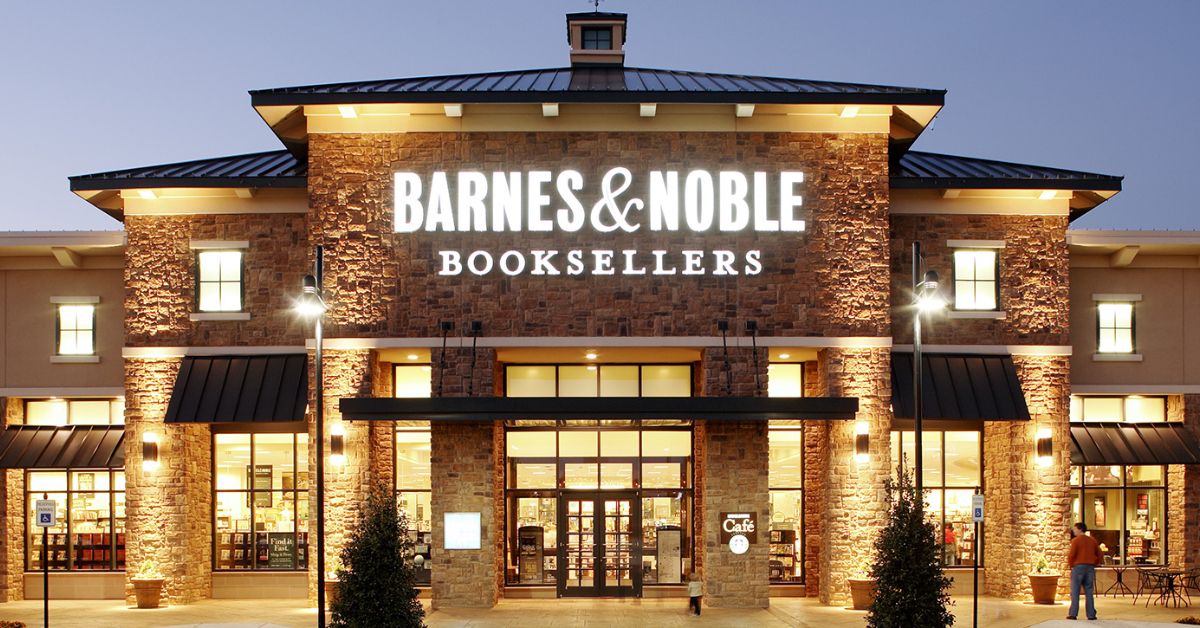Barnes & Noble Adopts Decentralized Brand Strategy
Barnes & Noble takes a different approach to branding, allowing individual stores more control over the in-store brand experience.

In 2001 I worked briefly at a Barnes & Noble in Silicon Valley when I was between jobs during the dot com crash. At that time, every Barnes & Noble store had the same branding—the familiar logo, rich dark wood shelves, green paint color scheme, and classic woodcut illustrations. I was a fan of this branding, it was reminiscent of a historic library, but with a modern touch, and somehow felt conducive to reading and browsing books.
When Amazon began making serious inroads into the book retail market, I was sad to see Barnes & Noble stores beginning to close, including the one in my home town. Like many people, I wondered if the company would survive.
So I was pleasantly surprised when I encountered this New York Times article about Barnes & Noble's latest brand strategy as they attempt to continue their revival (they plan to open 50 stores in 2024).
In a nutshell, the new CEO James Daunt is advocating for a departure from the tightly managed master brand strategy that Barnes & Noble is known for. He is giving individual stores more leeway in branding, including more decision making power in the interior design, color schemes, flooring, shelving, which Barnes & Noble logo to hang over the front door, even going so far as to allow one location to change its name back to B. Dalton, a smaller bookstore chain than the company had acquired.
In contrast to classic brand identity best practices, namely consistency of application, the new strategy is decentralizing control of the brand. Of course headquarters will stay involved in brand decisions, but it will be interesting to see how much negative "brand scatter" results from this vs augmented brand attachment that shoppers might feel visiting a local Barnes & Noble they can call their own. In the 80's there was a show on TV called Cheers and its theme song had a phrase that said, "Sometimes you want to go where everybody knows your name." In today's isolating world, there's something appealing about this, even for young people whose entire lives seem to be going online.
Will this decentralized brand strategy work?
Time will tell, but I think it's a step in the right direction. What can we learn as marketers from this strategy? Two things come to mind:
1. Differentiation. Barnes & Noble will struggle to compete with Amazon on things like price, delivery speed, and selection. Going head to head here is an uphill battle. This new strategy leans into places where Amazon cannot or will likely not follow: Bringing back the small local bookshop. Personal interactions. The tactile feel of picking up a book. Thumbing through it to read a few lines. Grabbing a coffee. Going to an author signing.
When I worked at Barnes & Noble, these were the elements that made for a great retail experience. I observed some customers who would stay in the store for hours at a time. Tired moms looking for a little relief and socialization with other moms plopped the little ones down in the kids section for a few hours. Alton Brown's in-person talk and book signing drew well over 100 people. Amazon.com cannot replicate any of these things. Barnes & Noble CEO James Daunt said, “If you just want to buy a book, the guys in Seattle will sell you a book. The enjoyment and the social experience of that engagement with books in a bookstore? That’s our game.”
2. Personalized "soul" at retail. I feel like there is a growing trend away from big brands and chain stores. Shopping malls are closing. Bed Bath & Beyond is going out of business. Online shopping is obviously partially responsible for this, but if we remove all the commodity chain stores, what does that leave in the community? Unique mom and pop stores. And that might just be a good thing. Of course people will continue shopping at Amazon and Costco, but people are not necessarily attached to the brand. You could rename Costco to Saveco and people would still shop there. They're not going for the brand experience. They're going to buy in bulk or save money. I think people recognize that every time a mom and pop store closes, a little bit of local culture dies. People still want some personality and flavor in their local markets, and that's why I think this new brand strategy just might work. If Barnes & Noble leans all the way in to this, they will distance themselves from Amazon, not by revenue but in terms of Positioning. People will begin to think of Barnes & Noble as something other than just a competitor to Amazon.
When I worked at Barnes & Noble, often even our Friday and Saturday nights would be busy. People saw the store as more than a place to just buy books. It was actually a "thing to do" on a weekend. A place to hang out. There seem to be fewer and fewer of these places in retail, and I think it's a sad loss. The last thing we need in this age of isolation, loneliness, and depression is fewer places for people to gather.
I also noticed a lot of people going to the Starbucks in the store to work. I even went there to work sometimes. Of course digital nomads work at Starbucks whether it's attached to a Barnes & Noble or not, but something about the combination of coffee+books made for an interesting, even inspiring, creative retail environment. I think some kind of hybrid Barnes & Noble+Starbucks+WeWork would make a great local business. Work for a while, get a coffee, browse some books for inspiration while taking a break. Sounds like retail heaven to me. I hope this strategy works.
